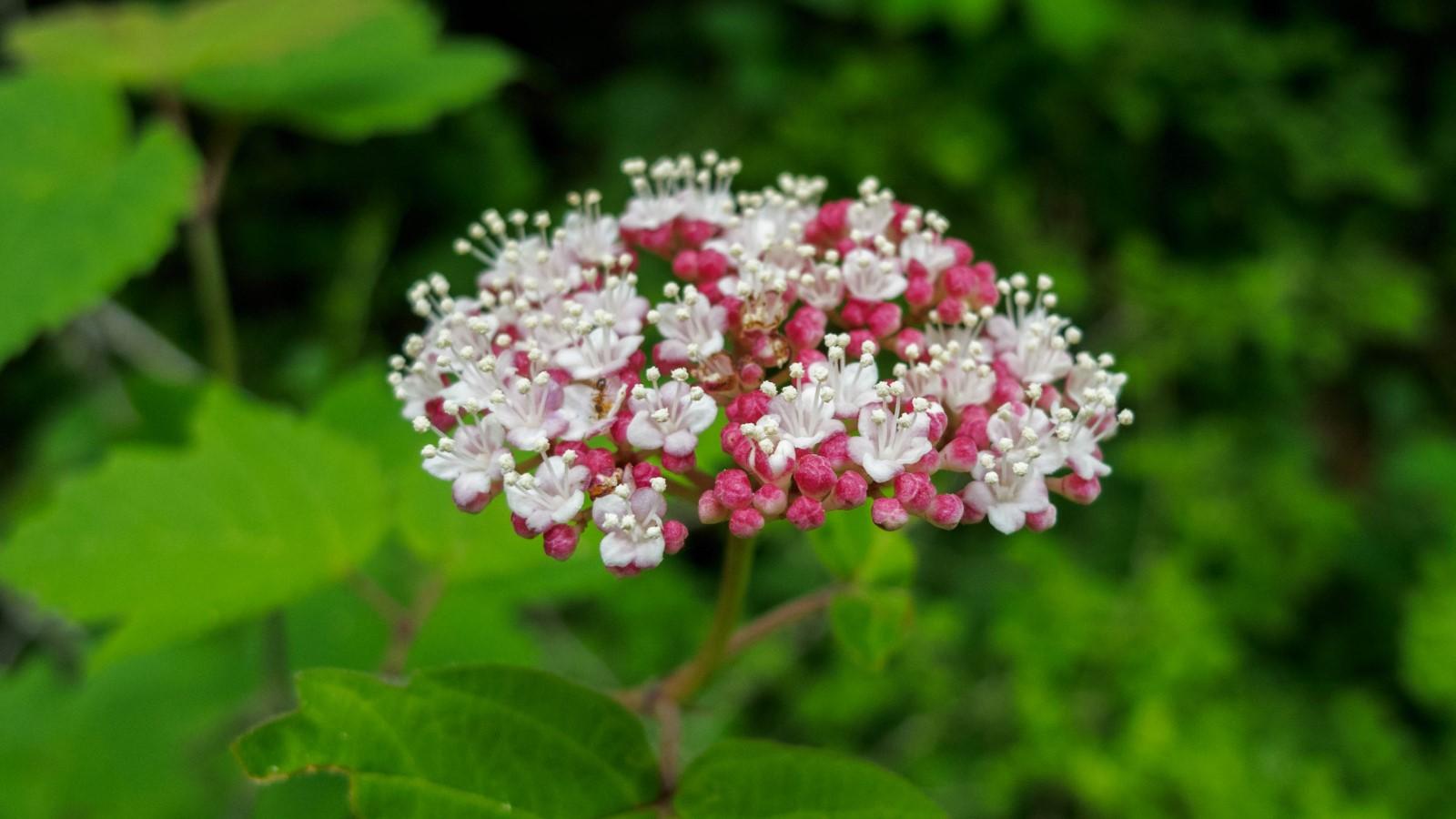About mapleleaf viburnum
Viburnum acerifolium
Deciduous shrub in the moschatel family
Maryland Distribution: throughout the state; primarily upland woods, including dry hillsides
Height: 3 to 6 feet tall
Flowers: clusters of white flowers from white or pink buds; May-June; insect-pollinated
Fall color: variable, though often pinkish-red; may be pale to fluorescent rosy-pink, smoky burgundy, purplish, golden yellow, or occasionally bronzy-orange
Sun: part sun to shade
Soil: moist to dry; unbothered by rocky soils; acidic (pH below 6.0)
Garden Uses: This multi-stemmed deciduous shrub can sucker and may produce a small thicket-like colony when free of competition in an ideal location. Growth is not very dense and plants are easily restrained via pruning if space is limited. Like other native viburnums, autumn leaf color is fairly reliable and showy before the leaves shed for winter.
Blue-black berries ripen in autumn and may last into winter if not consumed by migrating birds. Viburnums fruit best when they can be cross-pollinated by a second individual of the same species. (Plants don’t have to be grown side-by-side; pollinators should find them anywhere in the yard.)
Mapleleaf viburnum is a great addition to a wooded understory, shaded foundation bed, or bird garden. It’s one of the few locally-native shrubs that can thrive in dry woods, and is very tolerant of both heavy shade and drought.
Wildlife: The berries have high value as a food source for birds such as American Robin, Cedar Waxwing, and several other species. This also is a host plant for the Spring Azure butterfly.

Photo: Miri Talabac, UME

Photo: Miri Talabac, UME
